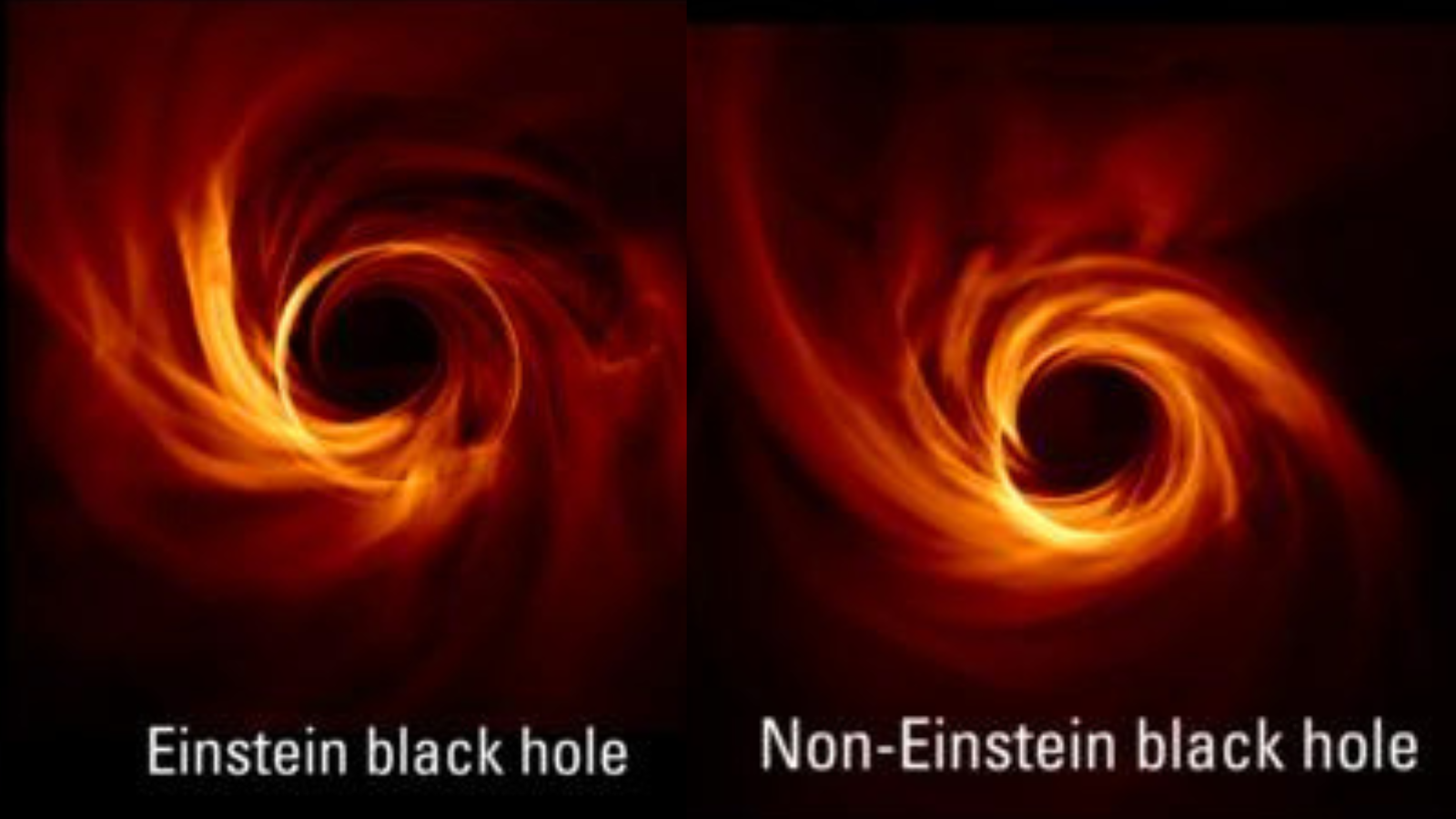|
|
Albert Einstein’s theory of gravity, general relativity, may not be the best recipe to describe black holes.

An illustration of future black hole images showing a subtle variation between those described by general relativity and those not. (Image credit: Luciano Rezzolla/Goethe University)
New research suggests future images of black holes could be precise enough to allow scientists to determine if these objects are accurately described by Albert Einstein’s theory of gravity, general relativity — or if they are best modeled by alternative theories.
Such black hole research is possible due to breakthroughs in black hole imaging pioneered by the Event Horizon Telescope (EHT), which revealed the first image of a black hole in 2019. This image focused on the supermassive black hole at the heart of the distant galaxy M87. In fact, our galaxy has its own central supermassive black hole called Sagittarius A* (Sgr A*) — and the EHT collaboration revealed an image of that one too, in 2022.
However, it’s important to recognize that black holes are, by definition, regions of space at which the influence of gravity becomes so great that not even light has the necessary velocity to escape. Thus, the images captured by the EHT don’t actually show the black holes themselves. Rather, they trace blisteringly hot matter that whirls around these voids. What we are effectively seeing in the images of M87* and Sgr A* are the shadows of these black holes.
The latest study’s team proposes that images of these shadows could be so detailed one day that they could potentially show tiny deviations from general relativity. These will allow scientists to investigate what the “recipe” is to actually describe black holes.
“We developed a practical, simulation-backed way to compare images of the hot gas around black holes predicted by Einstein’s general relativity with images predicted by deviation from general relativity,” research lead author Akhil Uniyal of the Shanghai Jiao Tong University in China told Space.com. “Running realistic three-dimensional simulations of gas and magnetic fields for many hypothetical black-hole spacetimes produced synthetic images and defined image-comparison metrics that quantify how different two images are.
“The key result is that while many alternatives look very similar to the ‘standard’ black hole at today’s image quality, the differences grow predictably as imaging resolution and fidelity improve, establishing that next-generation horizon-scale imaging could tell Einstein’s black holes apart from non-Einstein black holes.”
In 1915, over 100 years before the EHT captured an image of a black hole, Einstein formulated his “geometric theory of gravity,” best known as general relativity. Up until this point, the best description we had of gravity was Isaac Newton’s.